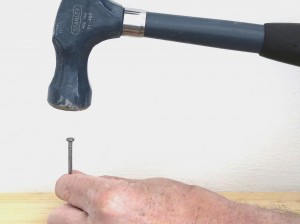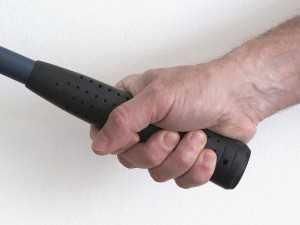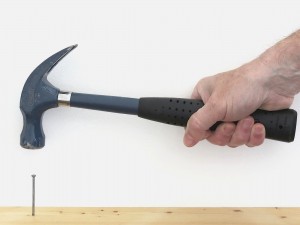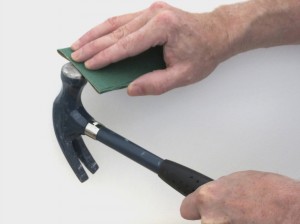Using a hammer
Using a hammer correctly not only makes your DIY work much more efficient, but also saves you from injuring thumbs and fingers. It’s clearly not the most complicated of operations, but many people don’t hold a hammer correctly, or look after the head of the hammer so that the majority of the blows you make, hit the intended target. Below are a few simple points about the correct way to use a hammer.
 |
To set a nail for hammering in place, hold the nail firmly, and literally a couple of light taps with the hammer will secure it sufficiently, so you can move your hand out of the way, and continue to knock the nail in as required. |
 |
Crucially, make sure that you grip the hammer correctly. Don’t allow your hand to creep up the shaft. Make sure that your hand is close to the end of the handle, leaving only a small amount of the handle visible. In this way, you get much more power per blow, as well as much better accuracy. |
 |
Make sure that the head of the hammer lines up perfectly with the head of the nail as you knock it in place. Even if the head of the hammer is slightly off line, it will push the nail off to the side, meaning re-setting the nail, or bending it, so you then need to start again with a new nail. |
 |
If you feel the hammer head keeps ‘slipping’ off the nail, but you think you’re striking the nail correctly, then simply give the face of the hammer head a good sand. This removes any dirt on the face, gives it a ‘key’, and suddenly you’ll find that your hammer blows are working efficiently again. |
More on hammers…
- Although a claw hammer is shown here, you can apply the above principles to most hammers, for example, club hammers, brick hammers, and pein hammers.
- When using a hammer, you should always use eye protection.
- For information on what I think is the best hammer you can buy, see my guide – ‘Buying a hammer’.
